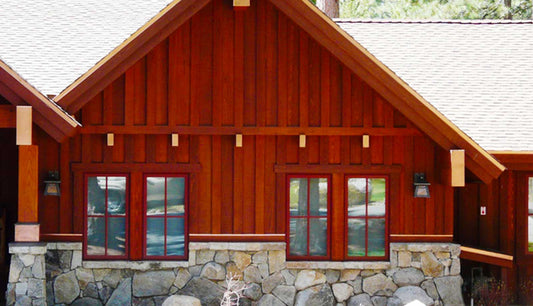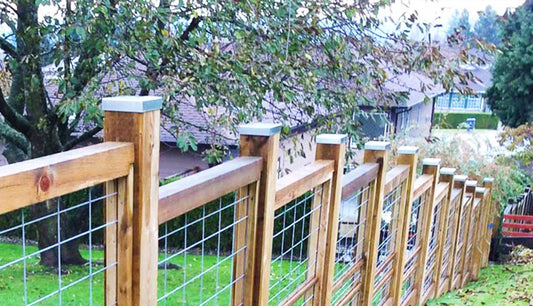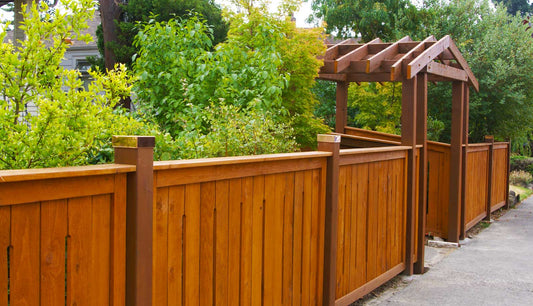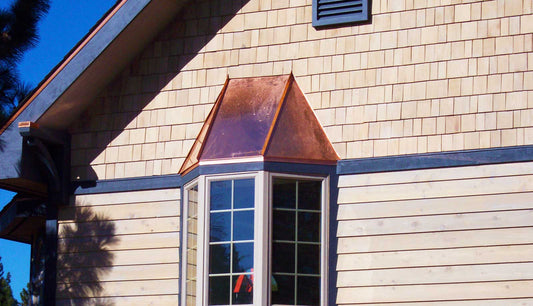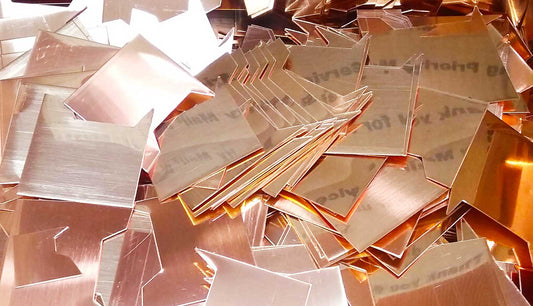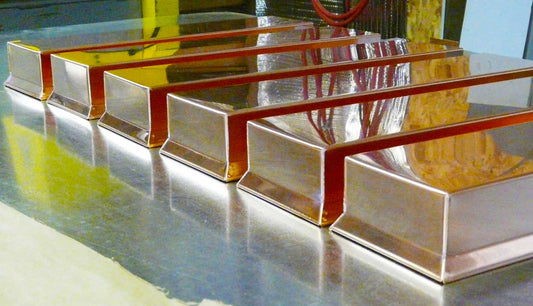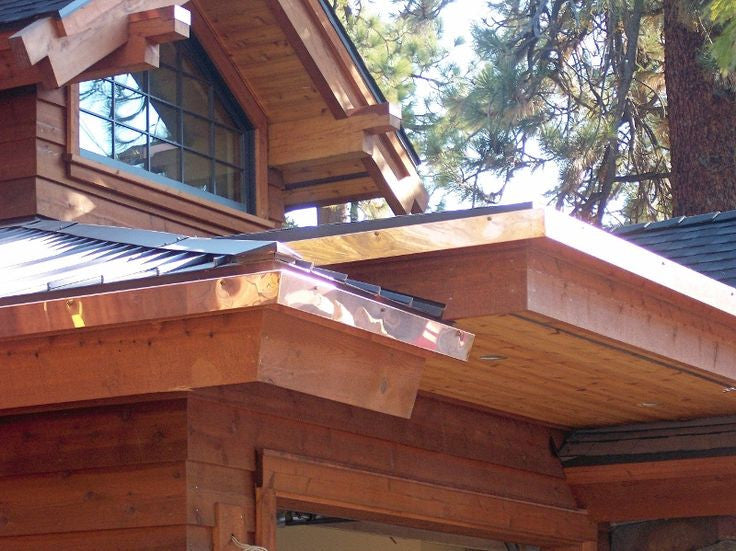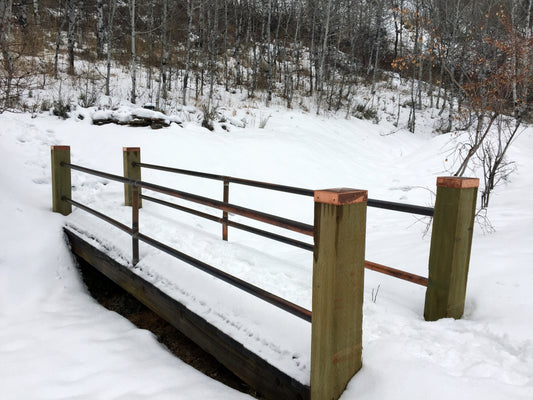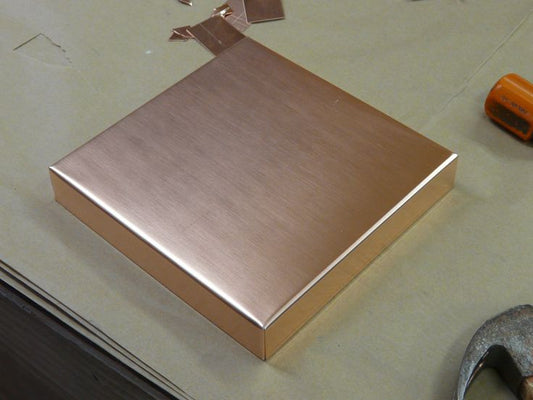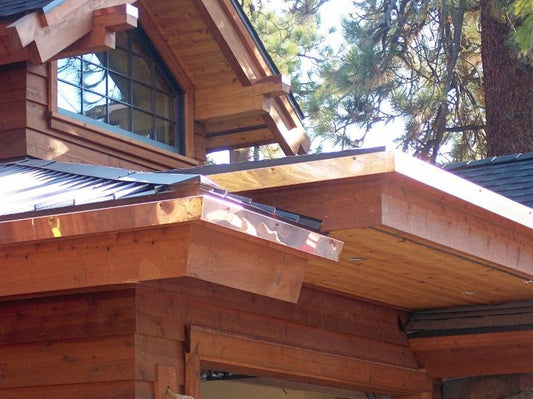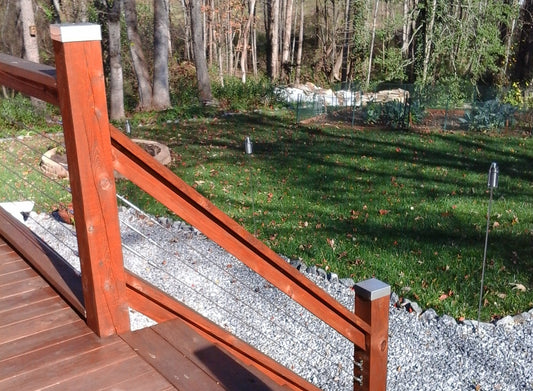Flashy roof trim or just functional flashing
In a recent blog, we discussed the wonders of roof flashing. We love it because it allows us to build our houses in many shapes with great features like vents and skylights by sealing roof seams to prevent water damage. While the roofing that covers the top of our homes is often viewed to be the most important, drip edge seals roof edges and the International Building Codes (IBC) for shingle roofs have recently decided everyone needs it, not just homes in snow-belt states. Ice buildup from melting snow is clearly a problem for roofs in cold areas, but the risk of water damage from rain run-off is drastically reduced with drip edge. And if you’re hoping for some metallic accents around your home, drip edge is the flashing that is most often left partially exposed.
The Right Material
We know you want to keep your home safe from all the evils of water so choosing a drip edge from the right material is key. Flashing materials must be durable, non-corrosive (weather resistant), compatible with common construction sealants and caulks (used at shelf angles and movement joints), malleable, (to accommodate movement and expansion/compression of neighboring materials), and low-maintenance. For durability and longevity, copper and stainless steel are the top of the line! Both are designed to last 50 to 100 years or more. They are more puncture- and tear-resistant than other flashing materials so they can withstand the demands of installation. Additionally, they are UV resistant and can be installed at any temperature unlike some flashings that become brittle or inflexible below 25○F or above 100○F.
The primary advantage of copper is that it is particularly malleable without sacrificing durability. It can be shaped by hand making it a good option for roofs with challenging shapes. Often used for historic restorations to match existing materials, copper has a classic appeal. However, if you’re hoping for the trademark green patina, don’t expect it to occur naturally, order your copper drip edge with a green finish. Green patinas naturally form from impurities in the metal. Today copper products are more pure and will develop dark brown, grey, or black patinas. Also, if you’re a fan of copper’s natural luster, left exposed to the elements, it will patina. We are very fond of the patina process, but we know some of you prefer shiny and new!
Where copper is flexible and easy to form and solder, stainless steel is durable, impervious, and hard. Its great advantage is that stainless steel eliminates the potential for staining. A drip edge with a kick may solve the staining problem, but copper has the potential to stain surfaces where water runs off. Stainless steel, however, will maintain its façade for decades to come and is a popular choice for light-colored stone like limestone and granite because it naturally blends in. (Subasic)
At Sheet Metal Caps we offer a third option, painted drip edge fabricated from 26 gauge colorfast 45 galvanized steel. Painted drip edge gives you color options to match your house or create accents and, like stainless steel, staining is not an issue. The layer of paint and self-healing zinc coating make for a durable product to protect your roof edges.

Installation Considerations
If you plan to install the drip edge yourself, keep in mind these building codes:
- Drip is installed, on the eaves, under the roof underlayment.
- Drip is installed, on the gables, over the roof underlayment.
- Pieces must be fastened to roof deck at least every 12 inches (305 mm), we recommend between 8 and 10 inches.
- Adjacent pieces must overlap at least 2 inches (51 mm).
- Shingles must be flush with the drip edge, unless otherwise specified by shingle manufacturer. (Gleisner)
And now you are a drip edge expert! As always, we are happy to assist you with any remaining questions. You can contact us online or at (775) 298-5060.
1. Subasic, Christine A. "Stainless Steel vs. Copper Flashing." The World of Masonry Construction. Masonry Construction, 01 Apr. 2001. Web. 01 July 2015.
2. Gleisner, Tina. "What Is Drip Edge?" Home Tips for Women. N.p., 2 Apr. 2015. Web. 1 July 2015.

